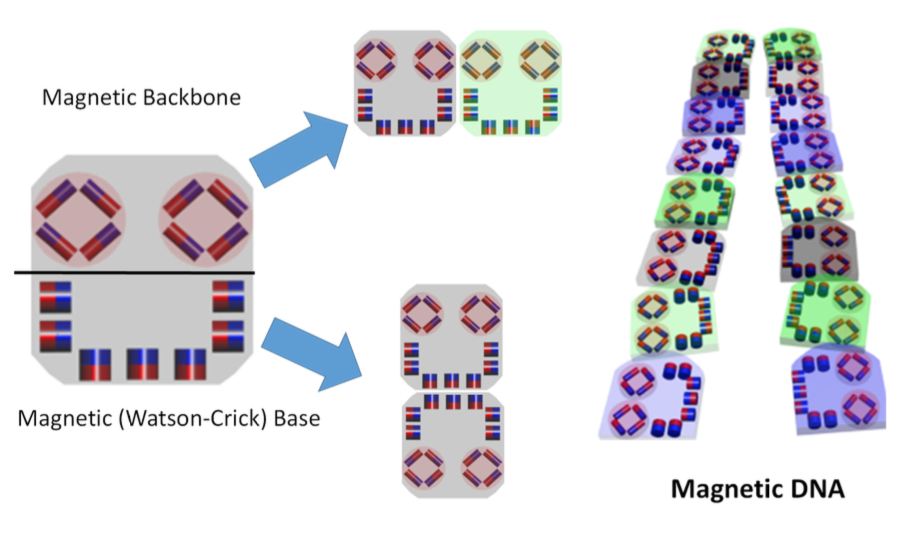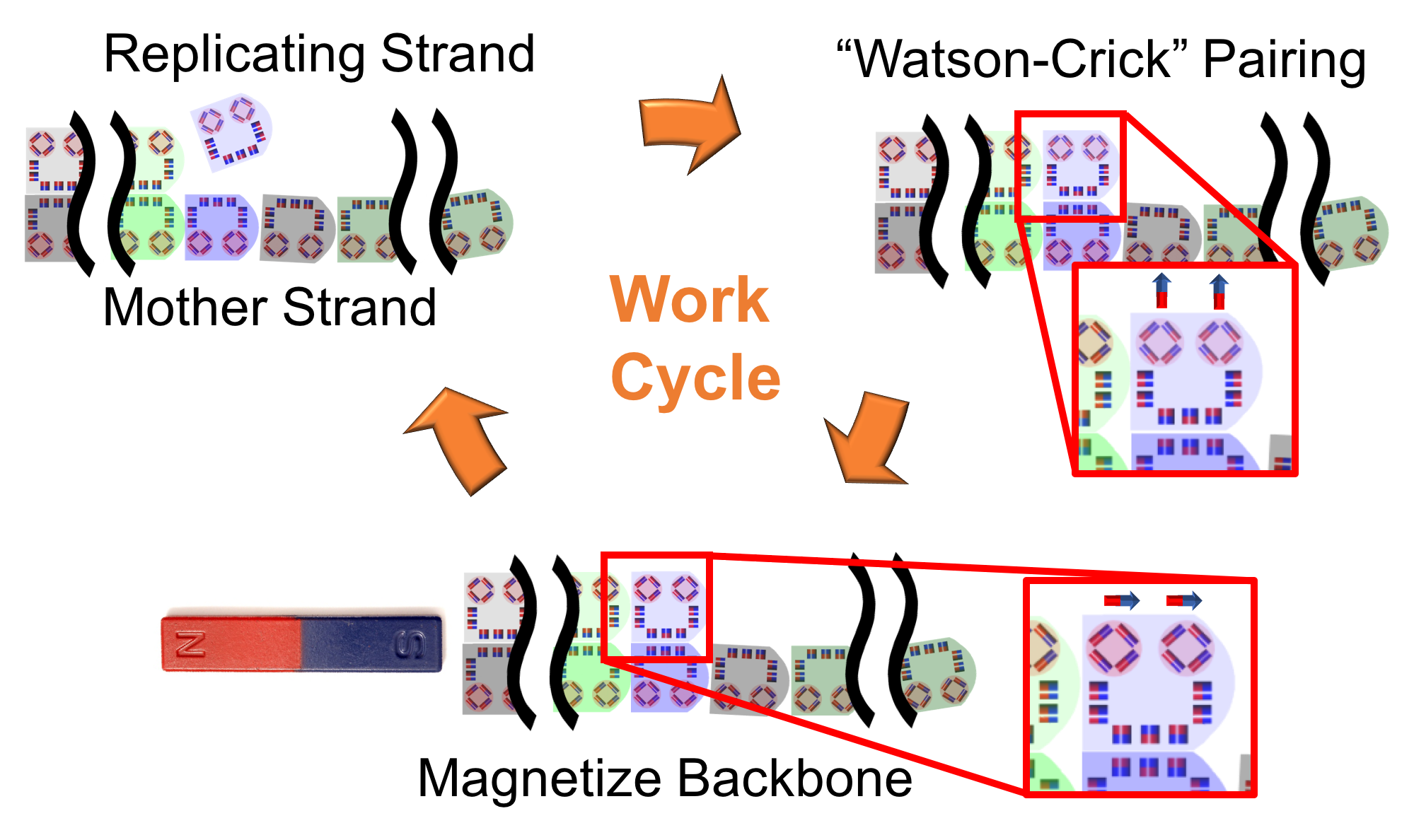Development of Magnetic DNA
Are there realistic alternatives to replication other than two-strand linear polymers like DNA? What came first, replication or metabolism? Must information (DNA) and function (proteins) be separated? Is the data necessarily one-dimensional? Must life have a container?
To answer these questions, we would like to draw inspiration from biology, and search for possible solutions by building our own life-like system: with elementary magnetic-based building blocks. We envision developing Magnetic DNA, a digital magnetic polymer capable of replicating itself.

The above diagram shows the current working concept for this system as of this writing. The basic element of this system will consist of an isolated few μm scale panel, which functions like a DNA base and its associated sugar-phosphate backbone. In place of chemical/hydrogen bonding, magnetic domains on each panel will make the panels interact in a specific manner. We can tune both the specificity and binding energy of the panels (analogous to Watson-Crick base pairing) as well as their ability to form modifiable side-to-side bonds along the assembling chain backbone (equivalent to the phosphodiester bonds in the backbone of DNA).
To replicate our strands, we envision the following work cycle:

a) A panel is attracted to a binding site due to the Watson-Crick complementary binding region and two side magnets.
b) A complementary Watson-Crick bond is formed.
c) A magnetic field is applied to reorient the magnetization of the backbone (diamond like region). The two side magnets (on the right) are also reoriented readying them for binding by an additional incoming base.
To realize this vision, we will test models from computational simulations on the macroscale and manufacture the successful models on the microscale. Computational simulations will help guide experiments, macroscale modeling will allow us to debug and test out simulations on the fly, and last but not least, mass-producing these systems on the microscale will allow us to verify that our theories and models were correct.